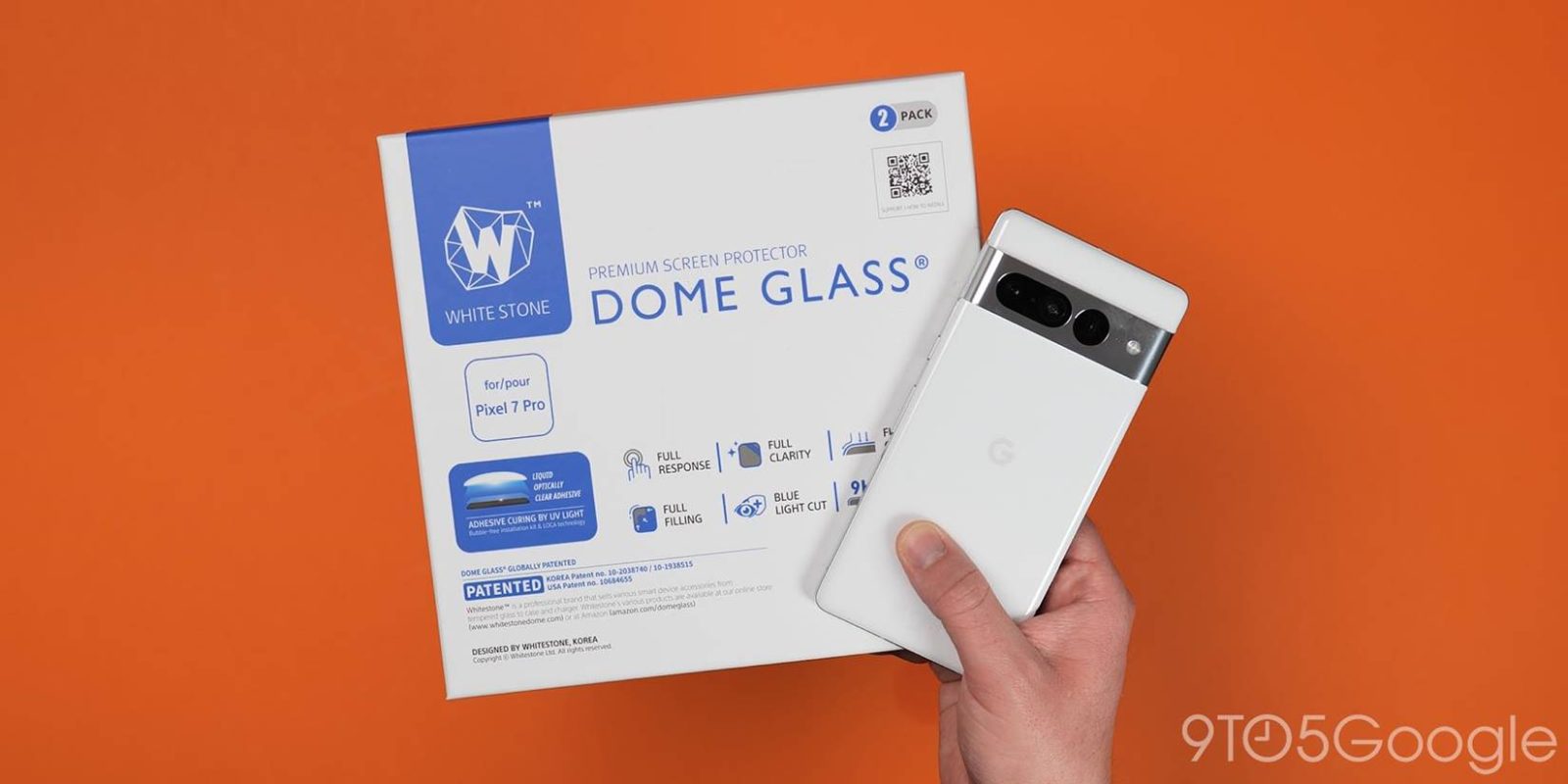
Often when people buy a case for their brand-new smartphone, you’ll follow up with a screen protector. The most premium option for most Android phones including the newly released Pixel 7 and 7 Pro comes from Korean firm Whitestone, and its Dome Glass is now available for Google’s handsets. Are they worth the asking price? We’ve tested them to find out.
Expensive protection: What’s the deal?
Priced at approximately $50 for a two-pack – that’s around $20-25 per screen protector. In the cold light of day, that seems positively extortionate. When you consider that a Pixel 7 or 7 Pro screen replacement starts at double or triple that cost, it’s easy to say that the prevention is cheaper than the cure.
One of the major reasons that people swear by Whitestone Dome Glass is that it should better mimic or feel like the high-quality glass screen you’ll find on the Pixel 7 and 7 Pro displays. It’s true that each screen protector does feel like a step up over most cheap alternatives. I’d be hesitant to say it feels exactly like the “real” display glass, but the Dome Glass feels about as close as you can possibly get.
[Update]: For the first time, the Whitestone Dome Glass is an official “Made for Google” certified brand. There are a number of other manufacturers that have achieved similar certification in recent years, but previously the official supported screen protector list has lacked Whitestone. While we have tested the tempered glass coverings for several years with no issues, Google tests to ensure that the in-display fingerprint scanner works correctly and accurately.
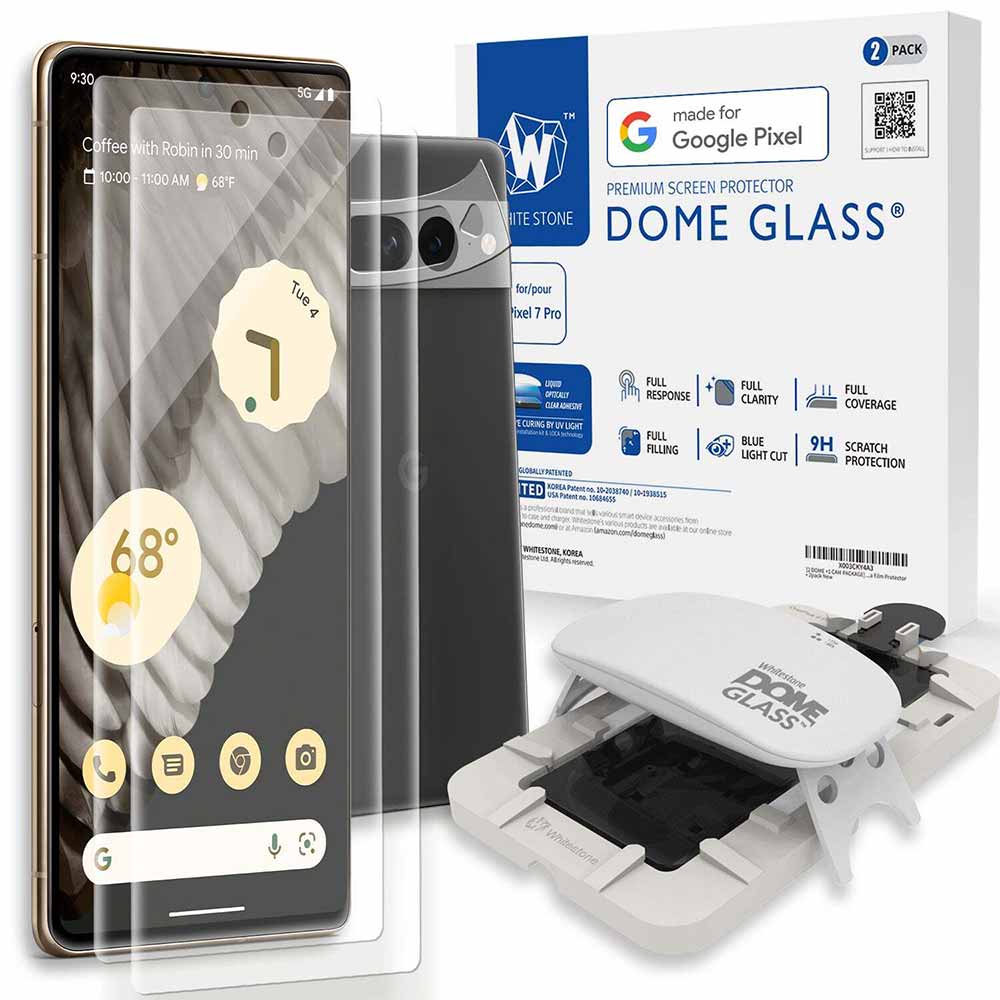
Interestingly, this doesn’t include last year’s Pixel 6 series. However, if you have the Pixel 7 or 7 Pro, there is extra peace of mind as Google recommends the Whitestone Dome Glass – as do we here at 9to5Google.
The adhesion process is one of the key differentiators. Whitestone’s UV bonding process uses liquid adhesive that is applied directly to your smartphone screen before you place the actual glass screen protector on top. Because of that, if you want simplicity and low costs, this is not the screen accessory to consider.
Undoubtedly another reason that Whitestone jacks up the price is the lifetime warranty offered with each screen protector. With exception of a few other brands, there are very few screen protector manufacturers that offer a lifetime guarantee on any product, let alone something that is right in the firing line like a screen protector.
Installation process

As mentioned above, slapping a screen protector on your smartphone display is often a process that is quick and easy. Quite a few manufacturers have started to provide guides or frames to help you achieve perfect screen alignment. Whitestone goes a step further with the Dome Glass, as it requires adhesive liquid and UV light to bond with your Pixel 7 or 7 Pro display.
Following the instructions requires a little patience and, in some parts, a steady hand, but the end result is, at least in our previous experience, worth a little extra effort. We’re not going to dive too deeply into the intricacies as Whitestone has a full in-depth guide for last year’s model, which is identical to the Pixel 7, and you can find (and follow along) below:
Here’s everything that comes in the box:
- UV curing light (USB-C)
- Whitestone Dome Glass screen protector
- Adhesive
- Adhesive absorption pads
- Mounting frame
- Position bridge for adhesive
- Pin loaders
- Speaker masking film
- Connector masking film
- Alcohol wipes
- Cleaning cloth
- Dust removal stickers
- Screen protector removal card
- Camera module protector film
One upgrade that is important is the move away from a micro USB-powered UV curing LED light to a USB-C compatible option. It’s bound to be helpful to be able to use your phone charger cable rather than a different older standard. Something we should note is that if you do require a replacement, a UV curing light will not be included. With that in mind, we’d suggest holding on to this just in case you ever need to claim against Whitestone’s lifetime warranty.
The fit and finish
If you’ve ever purchased a Whitestone Dome Glass before, then you will likely have some sort of idea of what to expect. The tempered glass reaches almost all the way to the edges but with enough room so that all official and 99.9% of third-party cases will fit without pinching or overlapping the edges.
For a phone like the Pixel 7 with a flat-screen, this isn’t a problem but for curved screens — as found on the Pixel 7 Pro — some of the edges are ever so slightly exposed. This means that truly complete protection from angled drops isn’t going to be offered because you can feel the very edges of your display underneath. A direct corner drop could still prove fatal for any curved screen, so this isn’t a negative. That said, the bulk or “main area” of your screen is covered and protected and should be safe from direct dings, scuffs, and scrapes.
Provided you closely follow the in-depth installation process, the fit and finish you’ll attain on your smartphone is genuinely second to none. The “Dome Glass” also has its own oleophobic coating that should deflect dirt, grime, and fingerprints almost as well as the original display. At first, your phone may feel a little sticky and smudges will be quite visible, but just use a microfiber cleaning cloth and any leftover alcohol pads to wipe away any residue and grease.
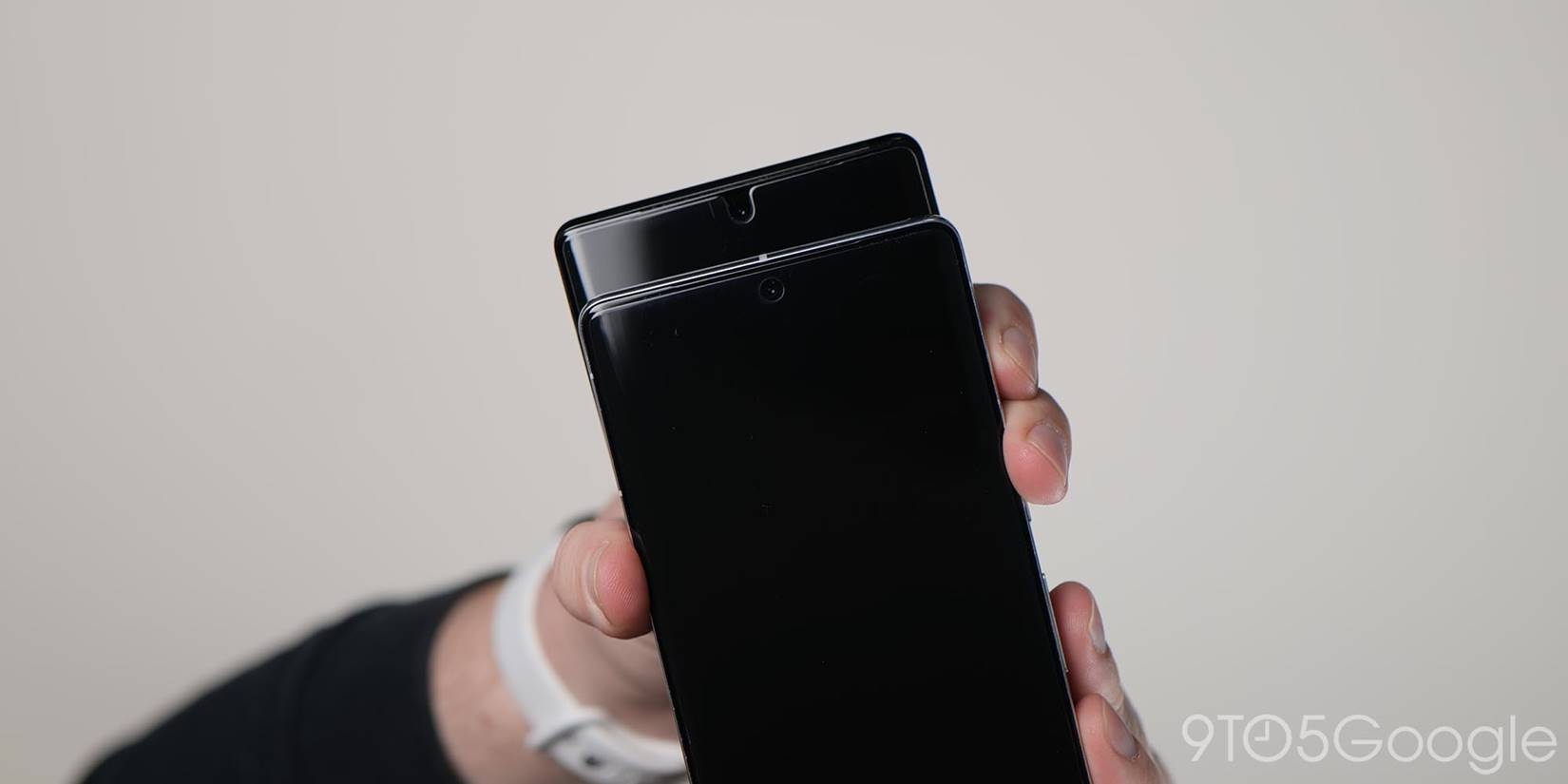
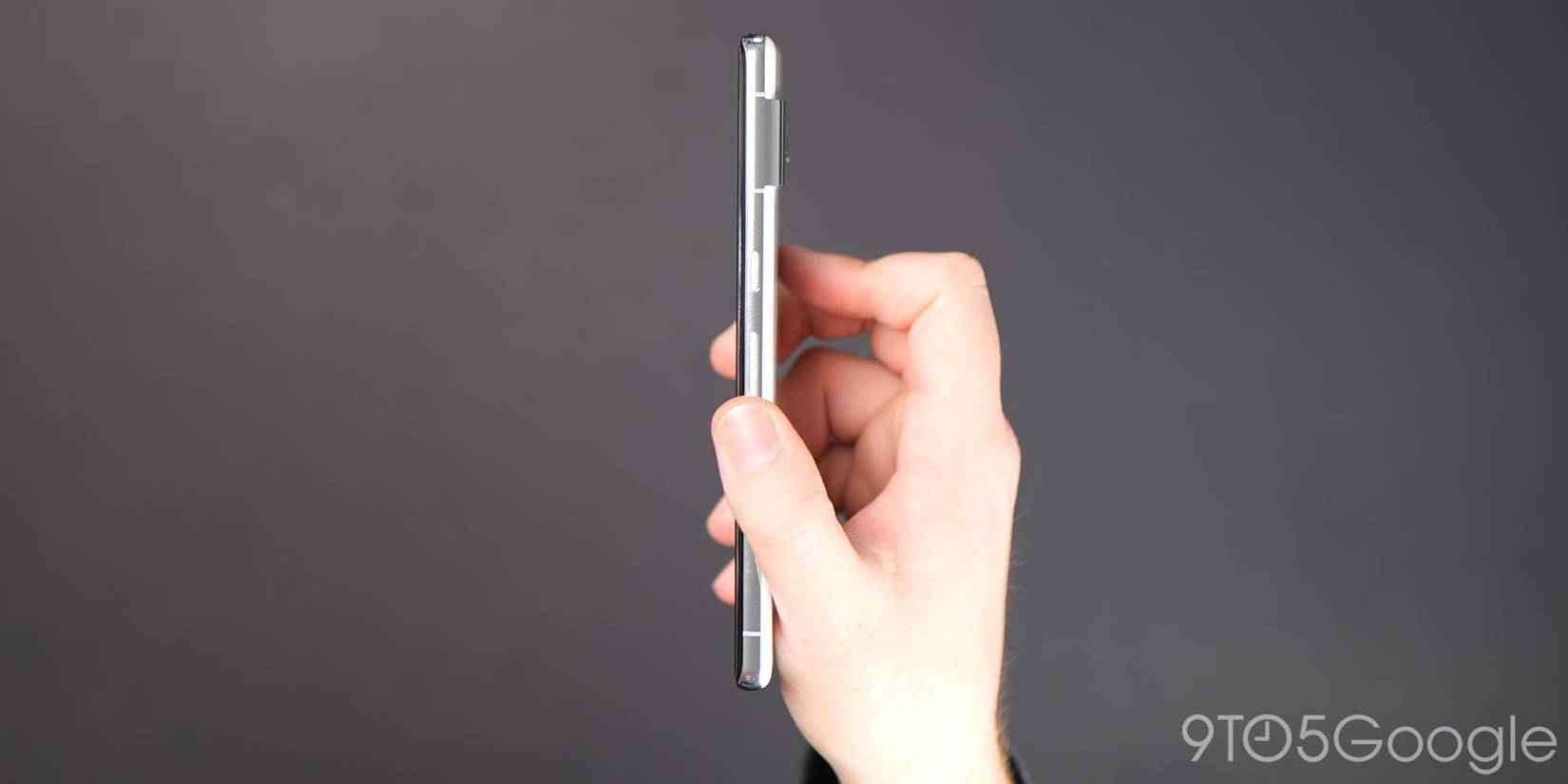
When fitted, the glass feels smooth and like real glass rather than a muted, matte, rough, or tacky texture that some cheap alternatives tend to edge toward. Given the problems many faced with the Pixel 6 series in-display fingerprint scanner, it’s probably good to know that the Whitestone Dome Glass works just fine with the Pixel 7 and 7 Pro in-screen fingerprint readers. Even without re-registering digits, it appears to work just fine in our experience, but we would recommend unregistering and re-enrolling your fingerprints for seamless unlocking.
Unlike last year, the Pixel 7 Pro selfie camera cutout is O-shaped and appears to line up well. It’s not quite perfect, but the actual camera or the borders are not obscured. I have noticed that dust and lint can get impacted in this section. Just a quick jet of air or a brush with my T-shirt or cleaning cloth and it’s easy to clean. But even without this, registering Face Unlock and using seemed to be fine with no issues. The Pixel 7 Whitestone also has a hole-punch and works just fine, too.
Something that needs to be mentioned here is that unlike regular screen protectors with pre-applied adhesive, the bond here is much harder. There’s the added bonus that if your screen already has micro-abrasions or scratches, these will be less visible as the liquid adhesive will fill gaps and make smaller scuffs less noticeable once the Whitestone Dome Glass is on there.
I have found the rear camera protection film to be fairly poor quality and not worth the effort unless you simply must have full device protection. The guide tabs were more frustrating than helpful, and they would snag during the installation process – which is not ideal. The weak adhesive means that it barely sticks to the camera bar area, but the glue is strong enough to attract dust, pocket lint, and dirt in equal measure.
Whitestone Dome Glass for Pixel 7: Worth $50?
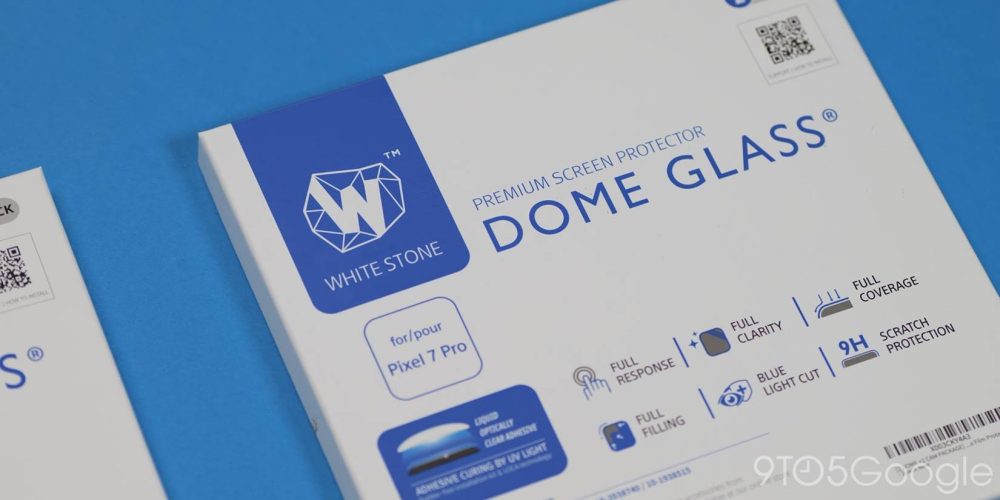
At $50 for two screen protectors and an installation kit, plus a daunting and sometimes finicky process that sometimes feels like performing surgery on your smartphone, for most people the Whitestone Dome Glass is 100% not worth it for the flat-screen Pixel 7.
I feel that it’s a completely different answer entirely when we discuss if it’s worth $50 for two Pixel 7 Pro screen protectors. Curved displays are problematic for protection. Most “standard” screen protectors simply will not work. This means that finding good quality screen protection that will accurately fit the admittedly softer Pixel 7 Pro display curves is frustrating. Online storefronts are littered with poor-quality options that attempt to trick you into purchasing with fake reviews and feedback.
At present, Google only offers two screen protectors certified to work with the Pixel 7 and 7 Pro on their own online store. The only tempered glass comes from Zagg and is priced at $50 for a 1-pack.
While they have Google’s official seal of approval, it makes Whitestone’s offering look positively cheap at almost half the price per screen protector. This is something to think about, as with any curved screen smartphone, the quality of screen protector diminishes quickly the cheaper the entry price. In my own experience, if you don’t mind the tacky feel of a TPU screen protector then you can pick up a multi-pack for under $15.
The Whitestone Dome Glass is just so much harder to recommend for the standard Pixel 7. Because it has a flat-screen, there is a real wealth of cheap screen protector options already available that work just fine, and we’ll likely see more emerge over time. I have used a cheap no-brand option from Amazon that provided a guide frame and took seconds to apply. It seems to work just fine with the fingerprint scanner, and although it doesn’t feel perfect, is fine for everyday protection.
When you start to factor in the extra bonus of a lifetime warranty that relatively high asking price really does start to make a little more sense. Especially if you have a drop and the screen protector does take the brunt and then becomes unusable. There aren’t many brands that offer that level of confidence in their product.
Top comment by dbjungle
To add to that: I’ve kept the original Whitestone Dome Glass on my Pixel 6 Pro since launch back in mid-January 2022, and it looks and feels great despite plenty of use and abuse over the past 10 months. It has held up well and will continue to do so for some time to come I’m sure.
Buy the Whitestone Dome Glass for Pixel 7/7 Pro
Google Pixel 7
Google Pixel 7 Pro
What cheaper alternatives should I take a look at?
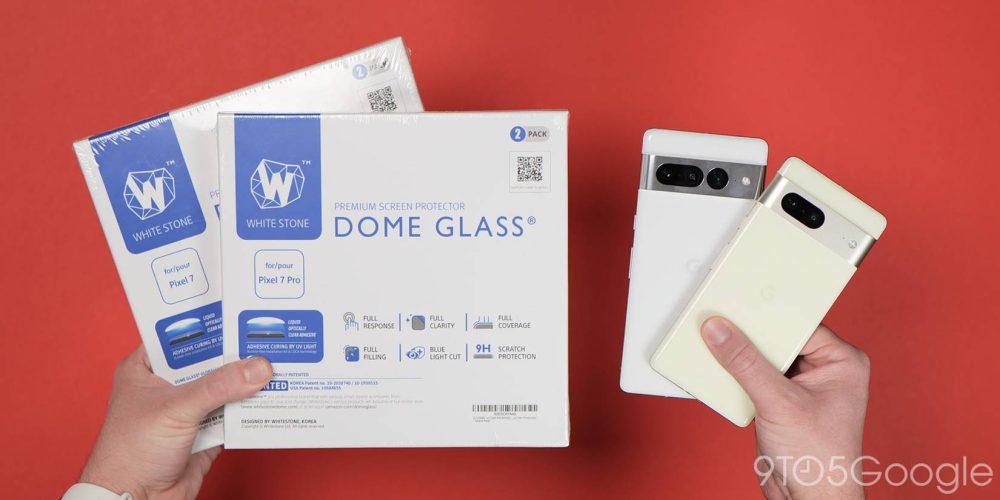
Some premium cases can exceed the $40 mark, and while we’re sure some people will baulk at that, the idea of spending almost $50 for a screen protector two-pack seems like a painful expense. Having used the Whitestone Dome Glass with the Pixel 7 series, it’s only really worth it for those that want a “real” glass feel on the smaller flat-screen model. It’s about the only premium option that works well with the curves on the Pro.
When you’ve spent almost $600 or $900 for your Pixel 7 or 7 Pro might be a painful potential cost. So we fully understand that you might want something a little more wallet-friendly. Luckily we have some alternatives for you to consider.
The downside here is that, like last year, because the Pixel 7 and 7 Pro differ in both size and screen type, it’s easy to recommend more affordable alternatives for the flat-screen device but a little harder to find good quality curved glass screen protectors. In our opinion, a soft TPU protector is the only way to obtain great screen coverage even with the softer curves found on the Pixel 7 Pro.
FTC: We use income earning auto affiliate links. More.



Comments